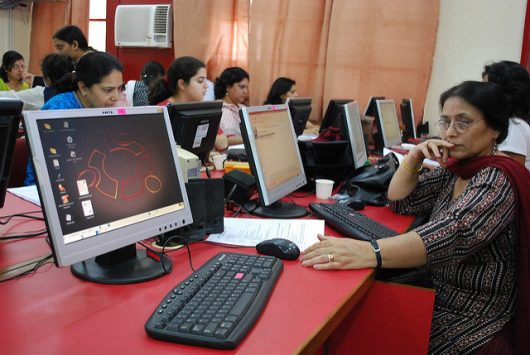Internet Access in India: What You Need To Know
 India is a heavily populated country with over one billion citizens. Many of these people are living in extreme poverty, lacking both life-sustaining basic needs and other more modern necessities. Among these inadequacies is the connectedness through the World Wide Web. With a national GDP of USD 2,000 in 2017, the internet access in India is hard for many to obtain. Though India is the second largest online market in the world, roughly 75 percent of the population is offline. Furthermore, 71 percent of internet users are men, which means that less than 30 percent are women.
India is a heavily populated country with over one billion citizens. Many of these people are living in extreme poverty, lacking both life-sustaining basic needs and other more modern necessities. Among these inadequacies is the connectedness through the World Wide Web. With a national GDP of USD 2,000 in 2017, the internet access in India is hard for many to obtain. Though India is the second largest online market in the world, roughly 75 percent of the population is offline. Furthermore, 71 percent of internet users are men, which means that less than 30 percent are women.
Problem background
Across the nation, urban and rural areas are lacking internet access in India and here is a quick look into why this void exists.
- Poor infrastructure: cables and/or fibers have yet to be installed in many undeveloped and poorly developed areas, especially low-income ones.
- Purchasing electronic devices to access the internet is not a basic need for people in extreme poverty.
- The absence of IT education prevents citizens from the desire for internet access.
- Gender inequality prevents women from using the web since to assure they will not be tempted to stray from cultural norms and expectations.
- Net neutrality: in all of India, there was a total of 174 internet shutdowns in the six years up to mid-2018.
Why does it matter
As previously stated, there are over a billion people in India. Today’s world is mostly connected to the internet and those without access are being left behind which represents a huge disadvantage. With 75 percent of a billion people in one geographical location left unconnected, there is a huge untapped market that India and the rest of the world are being deprived of. In 2016, the U.S. gained 16 billion dollars from India’s digital buyer market. If more people had internet access in India, it is likely the economy would grow and poverty would decrease, resulting in improved international relationships as well.
The solution
Fortunately, the movement to provide more citizens with internet access in India is in motion. The Department of Telecommunications (DoT) is reducing the internet shutdowns that happen due to net neutrality thanks to the influence of the Telecommunication Regulation Authority of India (TRAI). The Government of India is making progress in providing access to more Indian citizens and is partnering with independent partners such as BharatNet is enhancing the internet infrastructure. India Accelerator is another organization doing the groundwork to raise funds for many internet start-up companies which encourages entrepreneurship.
Internet future in India
Moving forward, facts above mostly mean a brighter future for India in internet access. As the DoT and the TRAI work together to prevent unfair blocks to internet access in India, internet freedom is becoming a reality for many formerly oppressed people. According to Inc42 Media, India has a 50 billion dollars potential online commerce market. When millions of people gain access to this market backed by empowerment and funding, this has a power to change India economy in a positive direction. By launching new companies, creating more income and more jobs, the GDP will rise, significantly lowering the poverty rates and creating a more sustainable and stable India.
India currently lacks the power to provide its citizens with the means to send and receive electronic data, something many would consider a basic human right in today’s world. This is coming to an end as internet access in India is becoming a priority for the Government and for the people.
– Heather Marie Benton
Photo: Flickr
